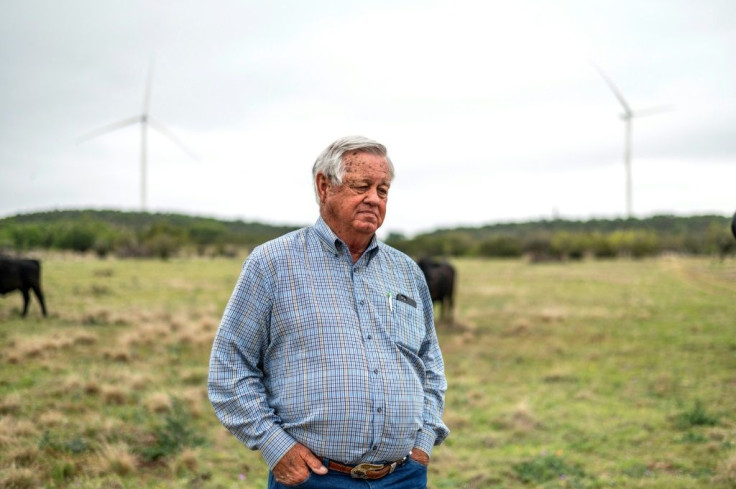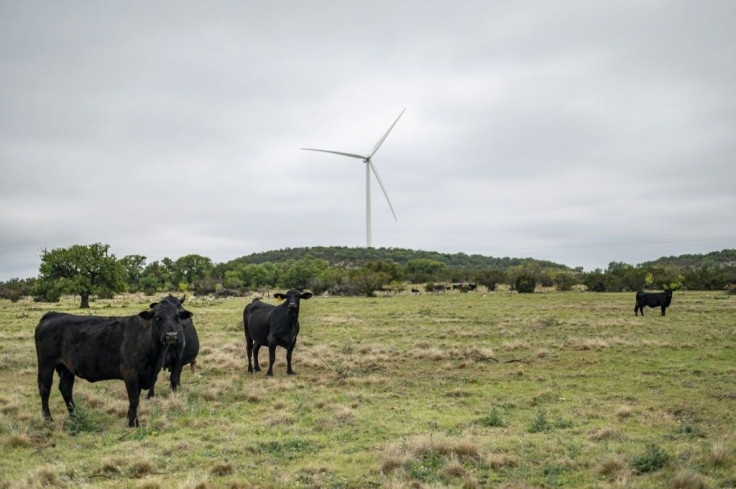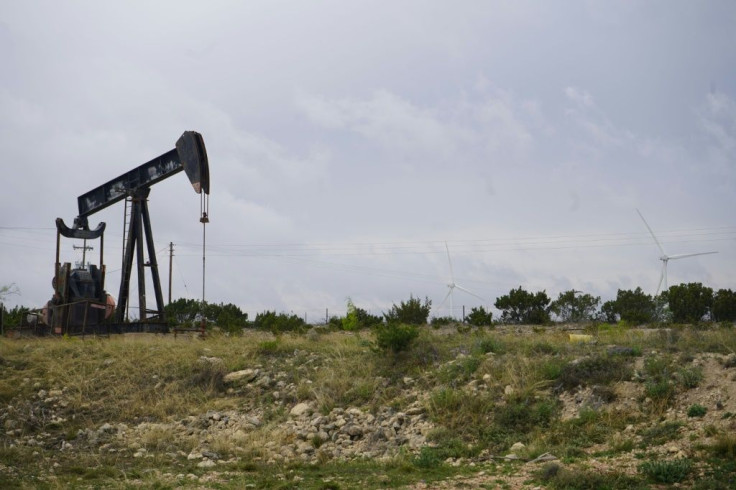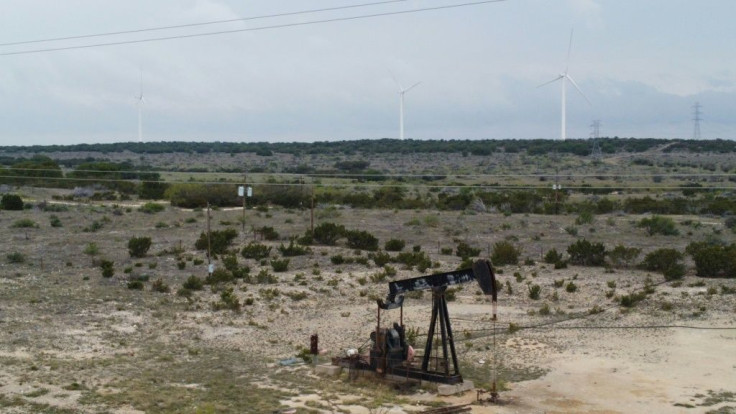In Texas, A Rancher Swaps His Oil Pumps For Wind Turbines
Cattle rancher Bobby Helmers cranes to listen as the blades of his six giant wind turbines slice through the air in the same Texas fields that once echoed with the sounds of oil pumps.
Like JR and Bobby Ewing, lead characters in the hit 1970s and 80s TV series "Dallas," Helmers hosted oil wells on his land for decades. But with renewable energy increasingly viable even in the petroleum-rich Lone Star State, the 79-year-old is among several ranchers who have plugged their pumps and made the shift to wind power.

He still marvels at how little noise comes from the massive turbines, each of which cuts a 120-meter diameter over the property, and the taste of modernity that they brought three years ago to a traditional cattle ranch owned by his wife Sandra's family for three generations.
"The Stetsons and the horses have been replaced by caps and pickups," Helmers said, referring to the iconic brand of wide-brimmed cowboy hats.
The cows, however, remain on the ranch in San Angelo, some 250 miles (400 kilometers) southwest of Dallas.

The Helmers and an employee raise 125 head of Brangus, a hybrid between the Angus breed prized for its tender beef and Brahman known for their resistance to heat.
But today, half of the ranch's operating revenue comes from the turbines.

A few miles away, in a small building set among juniper bushes and cacti, Kevin DeFoor manages some 10 workers tasked with maintaining the wind farm of 76 turbines, including those on the Helmers land.
"The region developed itself thanks to agriculture, ranching and oil," said 48-year-old DeFoor, an employee of French energy giant Engie, which manages the wind farm.

It took a while before the area native realized that local riches were not just found in the soil.
In 2007, DeFoor, a former prison warden, became the first in his family to work in the wind energy sector -- and he has been raving about the area's wind consistency ever since.
"Our turbines turn 50 percent of the time," DeFoor said, in what he called a "great performance" for the US wind sector.

President Joe Biden's call for a clean energy revolution has resonated in Texas. The state known for its fossil fuels has invested heavily since the early 2000s to become the nation's top wind energy producer and second-biggest producer of solar energy.
"Contrary to popular belief, Texas governor (and later US president) George W Bush, and then his successor Rick Perry didn't want Texas to be solely reliant on oil," according to Joshua Long, an associate professor of environmental studies at Southwestern University near Austin.
"They viewed Texas as 'The Energy State,' with a diversity of energy sources."
As a result, fossil fuels and renewables have coexisted in Texas for years.
Such transformations will be in focus later this week when Biden hosts an Earth Day summit aimed at reinvigorating the world's climate change fight.
But it is not out of environmental conviction that Helmers flipped from oil to wind.
Installed in the early 1990s, his oil pumps began producing steadily shrinking returns, and after about three decades, the contractor operating them eventually threw in the towel.
In a slice of good fortune, the Infinity Renewables group arranged to meet with Helmers and his neighbors in a nearby restaurant, where the potential royalties from wind energy the suitors described convinced Helmers to make the switch.
Oil reserves and profits can drop, he said, while "in wind, the production is stable," and profit shares rise over the years as the investments are amortized.
A full decade passed between the initial negotiations and construction of the first turbine on Helmers's property. By then, Engie had bought Infinity Renewables, and the technology had improved.
"The turbines were supposed to be 1.5 Megawatt hours, and they are now 2.625," boosting revenues, the jeans-clad cowboy said in his living room, where hunting trophies adorn the walls.
While his oil income fluctuated due to market volatility, Helmers now appreciates the steadier, although undisclosed, new income.
Despite the successes, he experienced his first wind energy disappointment a few months ago when his turbines stopped spinning for 10 days during a historic cold snap that paralyzed the region.
© Copyright AFP 2024. All rights reserved.





















